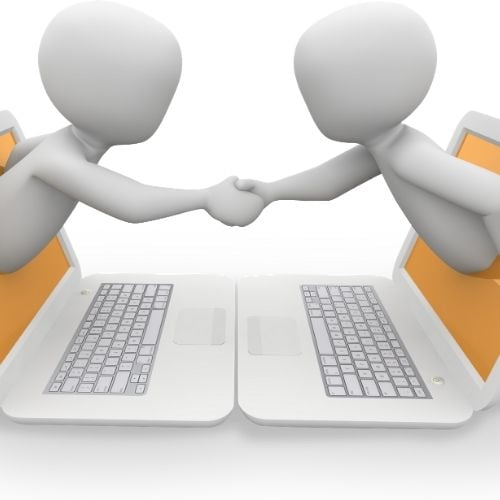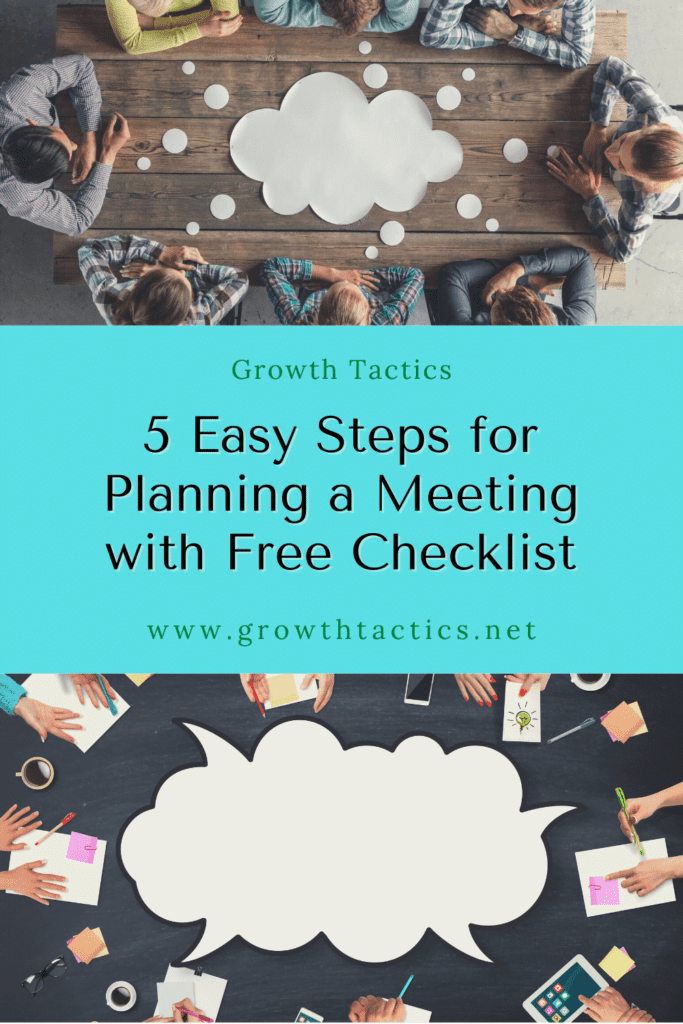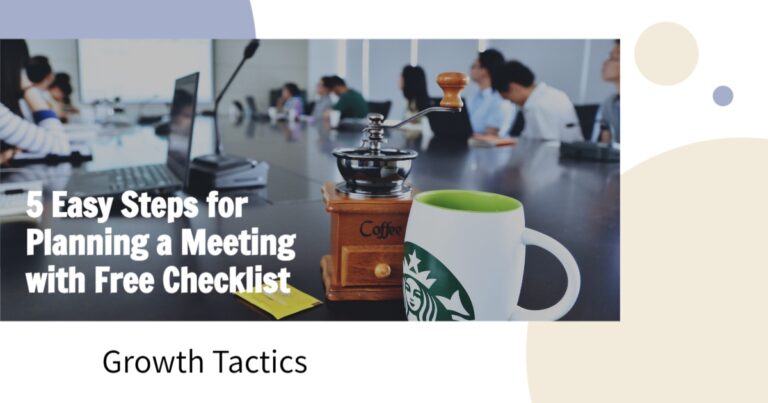Have you ever been in a meeting that seemed to drag on forever and when it was done you feel like you got very little useful information?
If you have been in any supervisory or any other position that regularly attends meetings, this has probably happened to you. This can be very frustrating for all involved.
Are you the one running the meetings like this?
When you’re the meeting organizer, do people leave feeling like it was a good use of their time?
Was it productive and effective, or was it a poor use of their time?
If the answer is the latter or you don’t know, don’t worry this article will provide you the tips on how to run effective staff meetings.
Jump To Section
Steps for Planning Effective Staff Meetings
- Determine the Goal of the Meeting
- Think About the Relevant Topics
- Who Needs to be There
- Find a Good Place
- Send Out Invites and Agenda

1. Determine the Goal of the Meeting
Take the time to prepare first. What is the goal of your meeting? Have a strategic plan. At this stage don’t focus on how you are going to do it. Instead, focus on what you want the outcome to be.
For example, do you want everyone attending the meeting to be informed about a new process that has come up or do you want the group to brainstorm a solution to the problem? If you have trouble determining the goal of the meeting, your next question should be, is this meeting really necessary?
Once you determine your goal, it will lead you to how the meeting will be held or the flow of the meeting. For example, if your goal was to inform your team of a new policy, the meeting would be more of a briefing with a questions and answers section at the end.
If your goal is to solve a problem, your meeting will likely be more of a group discussion and brainstorming session. Realizing your goals is the first step in preparing for a meeting because it will guide everything else.
Determining the goal is a crucial step in running effective staff meetings.
2. Think About the Relevant Meeting Topics
The topics will be based on your goals. Each topic should get you closer and help you accomplish your goals. Your first topic should of course be to explain the objective or the meeting purpose and the ground rules of the meeting.
The next topics should be geared toward your meeting goal. For example, if your goal is to inform on a new policy, your topics may look something like this:
- What is the new policy?
- When this policy will go into effect?
- How does this new policy affect the employees?
- Questions and answers.
The topics are a general guide and outline of how the meeting will go.
3. Who Needs To Be At the Meeting
Based on your goal and topics, who needs to be at the meeting? This list should be kept to a minimum but everyone that needs to be there should be there.
If you have too many people that don’t need to be there, you are just wasting their time and it could hurt the interaction in the meeting. If you don’t have people who have buy-in or information on the topics, you may miss out on ideas or getting the information to the right people.
Getting the right mix of people can help you reach your goal of the meeting.
4. Find a Good Place

Having the right location can many times make or break the success of a meeting. You should try to find a location that is convenient to the majority of the attendees within your building or office space. This way people are not spending too much of their precious time traveling.
More important, than location is finding a place with adequate seating, lighting, and acoustics. Making everyone as comfortable as possible will help with participation and productivity of the meeting. This can be especially true in larger groups. Make sure the space can accommodate the group.
Also, it may be a good idea to determine if this should be a virtual meeting held through video conference. This can be especially true for remote teams.
5. Send Out Meeting Invites and Agenda
Now that you have your topics, key participants, and location, the final step is sending out invites with an agenda or overview of what will be discussed. An agenda or overview is important so attendees can start thinking about the topics before the meeting starts.
Also, this will give each member time to formulate any questions or talking points beforehand. Try to only invite necessary employees to not waste others’ time.
How to Create a Staff Meeting Agenda
Step 1: Understand the Goals of the Meeting
Before creating an agenda, determine the meeting’s purpose, what you hope to achieve, and why it’s necessary to gather in person or on a conference call instead of using email, memos, or text messages.
Step 2: Plan Your Path from Point A to Point B
With the goals in mind, plan how you’ll move from the current situation (Point A) to the desired outcome (Point B).
Step 3: Recognize the Functions of a Meeting Agenda
A meeting agenda serves to get everyone on the same page about the topics discussed and helps keep the discussion on track.
Step 4: Outline Goals for Each Agenda Item
Create a bulleted list of specific outcomes for each agenda topic. For example, if discussing a new web design project, a bullet point could be “The team will choose two vendors.”
Step 5: List All Topics and Decisions to be Made
Include all topics and decisions that need to be addressed during the meeting. Be specific, so everyone knows their responsibilities. Ensure every topic is relevant and important enough to warrant everyone’s time.
Step 6: Organize and Prioritize Agenda Items
Organize the agenda items in a logical order and prioritize them based on importance and time sensitivity.
Step 7: Allocate Time for Each Topic
Estimate and allocate an appropriate amount of time for each agenda item to ensure a smooth flow and avoid rushing through important discussions.
Step 8: Distribute the Agenda Before the Meeting
Share the agenda with all attendees before the meeting, allowing them to prepare and contribute effectively during the discussion.
By following these steps, you’ll create a well-structured and effective meeting agenda that facilitates productive discussions and helps achieve the desired outcomes.
Planning a Meeting Checklist Template
Download and use the checklist below to plan your perfect meeting.
Additional Tips on How to Run Effective Staff Meetings

Once the meeting starts there are some goals and strategies you should follow to make sure the meeting is as effective as possible.
Start on Time
Many times people show up early for meetings and there’s nothing worse than showing up early only to have the meeting not start on time. Starting late can put everyone in a bad state of mind before the meeting even starts. Show everyone that you value their time by starting your next meeting on time.
End on Time
Just like starting on time, it is important to end workplace meetings on time. Even if you are having a great discussion that is going longer than expected, try to end it within the time that was scheduled. This will make it easier for the people attending the meeting to schedule their day around the meeting. It can be very frustrating for the attendees to have a meeting making them late for other engagements.
Ban Unnecessary Technology

Cell phones and other technology can be very distracting. Limit users from bringing their personal electronic devices to any formal meeting or at least have them put them on silent during the meeting.
This will at least make the cell phones less distracting to other members. If you do ban these devices it should be stated when you send out the invites and agenda. Then reiterate this point when you start the meeting.
Make the Objective Clear to Everybody
Everyone needs to know the objective. Preferably they should know the objective before the meeting starts. This is why it’s a great idea to send out an agenda beforehand.
The objective should be made clear again at the beginning of the meeting. You may have to reinforce the objective throughout the meeting to remind everyone why they are there.
Keep it as Brief as Possible
Time is money and pointless meetings are a waste of both time and money. Try to keep the meetings as brief as possible. The longer meetings drag out, the more people’s minds start to drift off onto something else.
Stay on Track
A derailed meeting can ruin all the hard work put into it. Try to keep your meetings on the topic. Don’t stray too far from the core elements of the meeting. Don’t make it a waste of time.
This will help you keep the meeting brief and maximize the use of everybody’s time, ensuring all agenda items are covered.
Seek Participation from Others During the Meeting
Try to keep employees engaged. Seeking participation from others will help keep members focused especially in decision-making meetings. Even if you are just trying to pass on information to the attendees, you can keep participation up by seeking acknowledgment from everyone. A lot can come out of team discussions over just one person talking.
End With a Plan
This is especially useful in situations where you are trying to solve a problem. You want to end the meeting with a good direction of where to next. Assign tasks if there are specific taskings for employees.
This will help members feel like the meeting was a success and motivate members to take action. When they leave with a plan they will likely begin looking for ways to start implementing it immediately.
Follow Up
After every meeting is over it’s important to follow up with everybody. This means you can shoot out an email giving an overview of everything you all went over. If you had any questions that couldn’t be answered in the meeting, give the answers to those questions.
Any action items that came out of a successful staff meeting should also be reiterated. The follow-up action should be used to keep the information fresh in everybody’s mind.
Digital Meeting Services

Virtual meetings have become increasingly popular and essential for businesses and organizations today. These meetings offer an efficient and cost-effective way to connect with team members who are geographically dispersed, as well as employees who work remotely. With a plethora of digital services available, it’s easier than ever to facilitate virtual meetings that are just as productive as face-to-face meetings.
Some of the most popular platforms for virtual meetings include:
- Zoom: A widely-used video conferencing platform, Zoom offers features like screen sharing, breakout rooms, and meeting recording. It’s an excellent option for both small team meetings and large webinars, making it a versatile choice for businesses of all sizes.
- GoToMeeting: Known for its ease of use and robust features, GoToMeeting provides a reliable platform for online meetings, webinars, and video conferencing. With the ability to integrate with various calendar systems, it streamlines the scheduling and organization of virtual meetings.
- Microsoft Teams: As part of the Microsoft 365 suite, Teams is a comprehensive collaboration tool that includes video conferencing, chat, file sharing, and more. It integrates seamlessly with other Microsoft applications, making it an ideal choice for businesses already using the Microsoft ecosystem.
- Skype for Business: A widely recognized platform, Skype for Business offers video conferencing, instant messaging, and screen-sharing capabilities. It’s a popular choice for smaller businesses and those who prefer a familiar interface.
When selecting a virtual meeting platform, consider factors such as ease of use, integration with your existing tools, and the specific features your team requires.
Additionally, it’s important to put effort into preparing and managing virtual meetings to ensure they are just as effective and engaging as in-person meetings. This includes setting a clear agenda, encouraging active participation, and following up with attendees after the meeting.
Wrapping it Up
Meetings are a great way to get everybody together, exchange information, and provide guidance. They can’t be completely eliminated from most work areas but they can be done in a way that makes them productive and efficient. I hope these tips helped you set up a great meeting.
Please don’t forget to share this article on how to run effective staff meetings, by using the buttons below.


